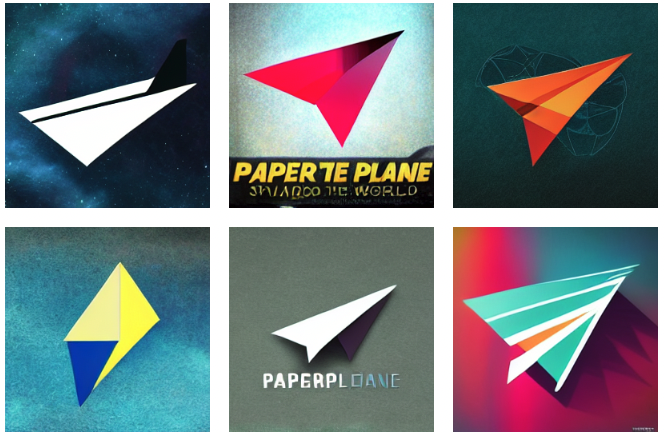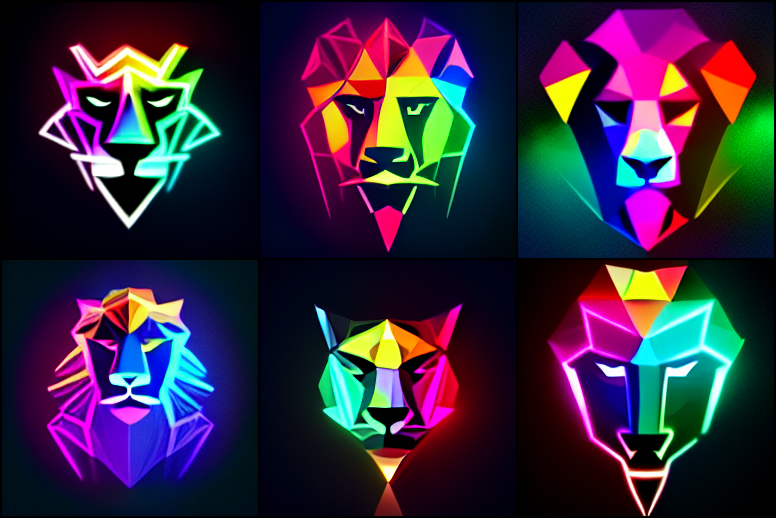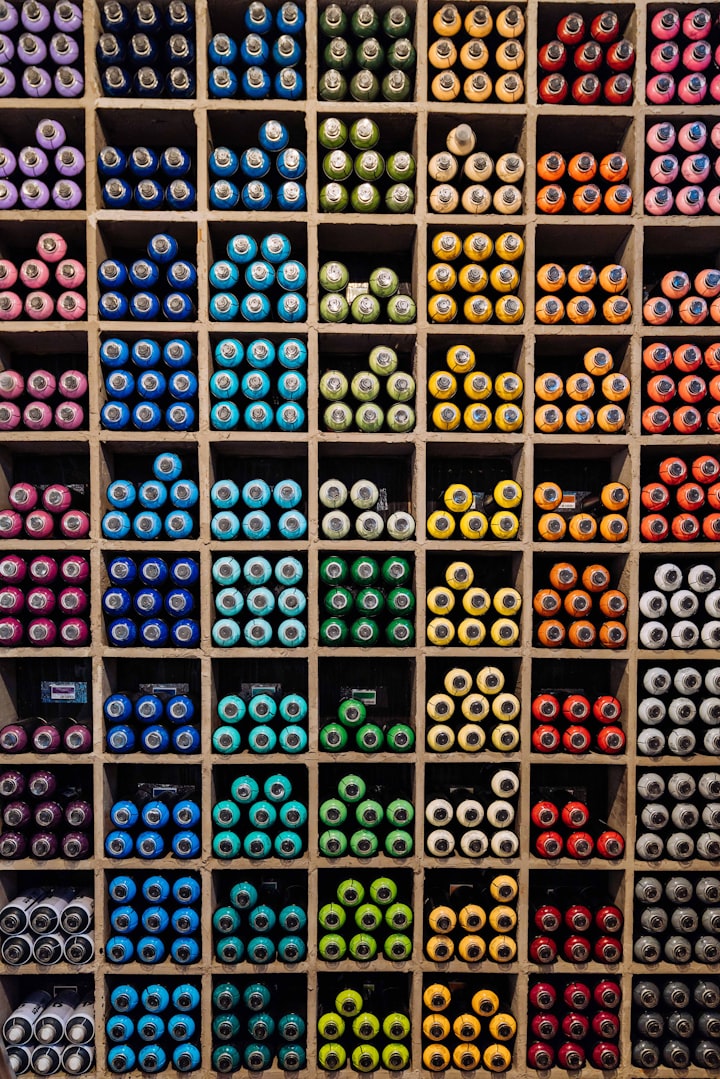Generate Startup Logos with AI: A Guide to the Erlich Text-to-Image Model
Let's see how to use the Erlich AI model to generate a logo for your company.

As a startup founder, defining your brand identity is crucial yet challenging. An impactful logo distills your company's essence into an iconic mark. But exploring concepts and design directions takes time and resources early-stage startups lack. That's where AI comes in.
Specifically, a new AI model called Erlich created by research lab LAION allows you to instantly generate quality logo options through text descriptions. In this guide, we'll see how Erlich can help you ideate and iterate to find a logo that powerfully captures your startup's mission.

How Erlich Helps Startups Visualize Their Brand Identity
Simply describe the style you want, and Erlich produces tailored logo mockups. This unlocks new flexibility for startups to:
- Rapidly explore diverse design styles by generating logos for descriptions like “a minimalist mark with abstract geometric shapes.”
- Visualize early ideas before manual creation to evaluate what resonates. For example: "our name Holt Healthcare in a modern serif font."
- Iterate easily by tweaking prompts to home in on an impactful design direction.
- Expand creativity by leveraging Erlich's broad visual range from retro to modern, abstract to literal.
This allows you to consider far more concepts than manual approaches permit. By facilitating the ideation process, Erlich helps startups discover stronger visual identities sooner.
A Peek Under the Hood
Erlich uses an AI technique called latent diffusion. It's trained on a huge dataset of logos and corresponding text captions. Erlich takes your text prompt and generates logo images matching the description.
This technology allows Erlich to render logos in any style you can describe. Now that we get how the model works at a high level, we'll walk through applications to startups.
How Startups Can Apply Erlich to Their Branding Process
Erlich shines during the early logo exploration phase. Some valuable use cases include:
- Brainstorming to rapidly gather diverse ideas, which drives more creative refinement later.
- Style research by comparing different treatments of the same idea, like “sleek and modern” vs “retro 70s” versions of your name.
- Concept validation by mocking up logo ideas to evaluate their look before manual creation.
- Mood boards to collect logo visuals representing vibes like “whimsical” or “authoritative” for inspiration.
- Design feedback by testing descriptions against Erlich to see if it conveys your intent before starting manual work.
These applications help startups engage in the crucial activity of aligning visuals with their mission and values early in the branding process.
A Caveat on Limitations
While Erlich facilitates logo ideation, recognize it may not perfectly capture nuanced design intentions. Its role is for inspiration and starting points to then refine manually. So use Erlich to enhance but not replace your creative process.
Understanding the Inputs and Outputs of the Erlich AI Model
To interact effectively with the Erlich AI model, it's essential to understand its inputs and outputs. Here's a breakdown:
Inputs:
- Prompt: The textual description of the logo you want to generate.
- Negative Text: An optional parameter to negate specific aspects of the generated logo.
- Init Image: An optional initial image for the model's prediction.
- Mask: A mask image for inpainting the init image.
- Guidance Scale: A value that guides the model's prediction towards the caption.
- Steps: Number of diffusion steps to run.
- Width and Height: Target dimensions for the logo image.
- Init Skip Fraction: Fraction of sampling steps to skip when using an init image.
- Aesthetic Rating and Weight: Parameters to guide the aesthetic aspects of the output.
- Seed: Seed for the random number generator.
Outputs:
The output is an array of image URIs representing the generated logo designs. Each image corresponds to a different iteration of the diffusion process.
Step-by-Step Guide to Using the Erlich AI Model
Let's dive into the practical usage of the Erlich AI model. Below is a step-by-step guide on how to generate logo designs using this model:
Step 1: Install Required Packages
Start by installing the replicate Python package, which enables interaction with the Erlich model.
npm install replicate
Step 2: Authenticate and Run the Model
Set up authentication by exporting your API token and then use the replicate package to run the model with your desired input prompt.
import Replicate from "replicate";
const replicate = new Replicate({
auth: process.env.REPLICATE_API_TOKEN,
});
const output = await replicate.run(
"laion-ai/erlich:92fa143ccefeed01534d5d6648bd47796ef06847a6bc55c0e5c5b6975f2dcdfb",
{
input: {
prompt: "..."
}
}
);
Step 3: Explore Output and Iterate
Inspect the generated logo images in the output array and iterate as needed to refine and choose the best design for your logo.
Conclusion
The Erlich AI logo generator demonstrates the potential of artificial intelligence to enhance human creativity in the branding process. By rapidly generating logo concepts from text prompts, Erlich provides startups with more flexibility to ideate and iterate on their visual identities.
However, it remains crucial to apply human oversight when using AI tools in design. While Erlich can provide useful inspiration, startup founders must refine the logos to perfectly align with their specific brand essence and messaging. AI is not a replacement for human imagination and judgment, but rather a tool to complement it.
When applied thoughtfully, Erlich and similar AI models enable startups to expand their creative possibilities during branding. The time savings from automating grunt work allows small teams to focus their energy on the aspects of logo design that necessitate human ingenuity - polishing, iterating, and infusing the intangible qualities that resonate.
Explore integrating Erlich into your startup's logo design process. Please feel free to reach out with any other questions as you experiment with these emerging technologies. Thanks for reading!
Subscribe or follow me on Twitter for more content like this!
Resources
For further exploration and learning, here are some valuable resources related to the Erlich AI model and AI-powered creativity:
- AIModels.fyi: Discover a wide range of AI models for various creative purposes, including text-to-image generation, image manipulation, and more.
- AIModels.fyi Creator Page: Learn more about the creators behind the Erlich AI model and their other contributions.
- Erlich Model Details: Get detailed information about the Erlich model's specifications, performance, and usage.
- AIModels.fyi Notes: Access additional guides and resources to enhance your understanding of AI models and their applications.
- Demo Link for the Erlich Model: Interact with the Erlich model through the provided demo interface to see its capabilities in action.




Comments ()